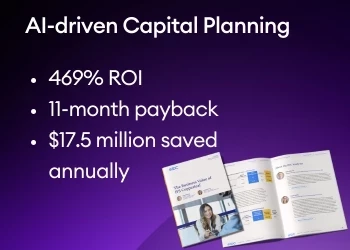Drucker’s approach to developing business strategy
Regular columnist, William A. Cohen, breaks down Peter Drucker’s approach to developing business strategy into 6 core principles
Add bookmark
Drucker did not believe in portfolio management or any quantitative analysis by itself as the basis for strategy. Either could lead to profit maximization or corporate acquisition as primary goals, which he did not recommend. He did note that business organizations operate on a theory of business in which strategy results in desired goal achievement in future environments that may not be identical with those existing today. This is how he distinguished planning from the strategy used as a part of the plan.
Strategy not by formula
Drucker did not believe in developing strategy by formula. He avoided portfolio management frameworks including the Boston Consulting Group’s (BCG) four-celled matrix, and other formula methods based on analysis of quantitative data and conditions in the past. He pointed out that while BCG’s matrix led to growth, this growth could also lead to failure because it encouraged size and acquisition of new markets, even if the organization provided no advantages under these new conditions. While a purely quantitative analysis led to strategies of maximum profitability through pricing with an “all the market will bear” philosophy, it attracted competition, did not serve society and frequently failed.
Drucker’s approach to strategy
Drucker looked at a company’s objectives and whether they matched the business in which the company was engaged, what their business should be, who would be their customers and what their customers wanted. He also did not ignore if their business contributed to society. This information was needed as it affected strategy.
Also needed were knowledge of events that had occurred that could affect strategy. He called these “business certainties.” Positive or negative, the certainties were important because of their potential impact. He combined certainties with recognition of company personnel and resources both available and lacking in the business, not ignoring ethical leadership, which he said would determine 50 percent of results, on any endeavor.
Increasing international competition was one certainty of importance which was often overlooked. For example, Drucker foresaw the demand for foreign automobiles in the US long before this occurred.
In the late 1950’s American automobile manufacturers knew that foreign competitors were acquiring the capability of producing high quality, fuel efficient and low cost cars. As quality increased, their lower labor costs could lead to serious competition. This threat was mostly ignored until it its impact on American companies could no longer be denied.
Necessary questions for strategy development
Drucker recognized that any strategy had to consider the answers to four basic questions:
- What opportunities the organization wants to pursue and what risks it is able and willing to accept?
- What is the scope and structure of the strategy, including the right balance among specialization, diversification and integration?
- What are the acceptable trade-offs between time and money between in-house execution versus merger, acquisition, joint venture or other means to reach an objective?
- Is the organizational structure appropriate to economic realities, opportunities and performance expectations?
The Drucker method of strategy development
Since Drucker promoted analysis and reasoning rather than fixed gimmicks for strategy development, I integrated his approach with that of strategists spanning more than 7000 years of recorded history and representing a wide variety of situations. This was unfortunately only completed as Drucker’s health began to fail. As a result, although I intended to get his feedback, the project was not completed in time for his review.
I saw that what Drucker did was to integrate goals, objectives and judgment based on observation with the variables of the situation and the resources needed. I knew his judgment involved principles of strategy, many of which he had not documented and some of which he may not even have been aware that he was applying. I was familiar with many principles of strategy from my reading of recorded history but knew that many were not applicable to business.
As I analyzed these principles, I found that some were too specific to other endeavors or outdated and required revision. Eventually, I produced a list of ten principles. They were the distillation from the thinking of many strategists in many areas but all were consistent with Drucker’s ideas.
Commit to a definite objective
Drucker made it clear that the definite objective was what the business should be. This is why he devoted so much importance to defining it. You cannot get to where you are going until you know exactly what the desired destination is. An objective must be exactly defined and everyone in the organization must be committed fully to it.
Seize the initiative and keep it
There are many instances where individuals have promising ideas, but delay developing them or bringing them to market. Frequently they never do but someone else does and is successful. Or maybe they do, but someone else does this sooner. This principle says you must take the initiative and maintain it. Drucker emphasized action. It is not enough to have a great idea, you must act on ideas for them to mean anything.
Economize to concentrate resources where and when most needed
You cannot be strong everywhere because resources will always be limited. Consider time. We all get the same amount, but some waste a good deal and spend it in areas that are not impactful. The idea is to economize where your efforts and resources are not critical and use resources where they are. You must concentrate superior resources at the decisive point in the situation.
Keep your positions flexible
To achieve any strategic objective, you need to be agile and responsive to change. You may need to modify your approach and your positioning, even as you continue to work toward an objective. That is why if what you are doing is not working, besides being persistent, you need to alter your strategy. It is true that persistence is a valuable factor in reaching any goal, but maintaining a faulty strategy in pursuit of a goal is irrational.
Do the unexpected
It is frequently effective to do the unexpected, especially in facing strong competition. This principle can also be applied to customer experience, so long as the surprise is beneficial to them. It is why some organizations grew and are still growing despite the pandemic while their competitors failed.
Keep things aimple
Someone once speculated that if all the parts in one of NASA’s rockets were 90 percent reliable, the rocket would fail 50 percent of the time. The more things that can go wrong, the more will go wrong. If you want less failure, keep your strategies simple, requiring fewer actions and uncomplicated.
Prepare Multiple Simultaneous Alternatives
Since some actions will fail regardless of effort, you should always have alternative backup alternatives prepared.
Take the Indirect Route to Your Objective
Moving directly against any human thought or endeavor arouses opposition. People tend to hold on even more strongly to their previously held notions or position.
For example, no one likes to be sold anything, but most are eager to take advantage of a bargain. The difference is subtle, but the results can be decisive. The direct route will usually lead to the strongest opposition. The same principle holds true in a situation where there is competition that must be faced, and this principle should be recognized in your strategy. This concept was promoted by B.H. Liddell Hart, a military strategist who emphasized the indirect approach over the frontal assault in warfare.
Practice timing and sequencing
The Bible asserts that there is a time for every purpose under heaven. These words even appeared in a popular song by Pete Seeger in 1962. Implementing the right strategy at the wrong time or in the wrong sequence can be just as ineffective as if the strategy is completely wrong. You have heard the saying, “he was ahead of his time.” Yet, someone with the same idea at the right time may be extraordinarily successful. Bottled water is very successful today. Still, fifty years ago, the idea of anyone paying money to purchase drinking water, except from Lourdes or a similar source, would probably have failed.
Do not hesitate to exploit success
Do not stop or slow down in achieving your objectives. Not staying well ahead of your competition is simply giving your competition the opportunity to catch up and surpass you.
6 core principles for eveloping strategy based on Drucker’s concepts
- Decide on what business you are in and what the business should be in the future.
- Initiate the process of creating the organization’s future.
- Get the information you need and decide what events that have already occurred mean for the future.
- Bring together the fixed certainties, the resources required, and the principles of strategy.
- Decide on action steps to implement the strategy.
- Take action.
























